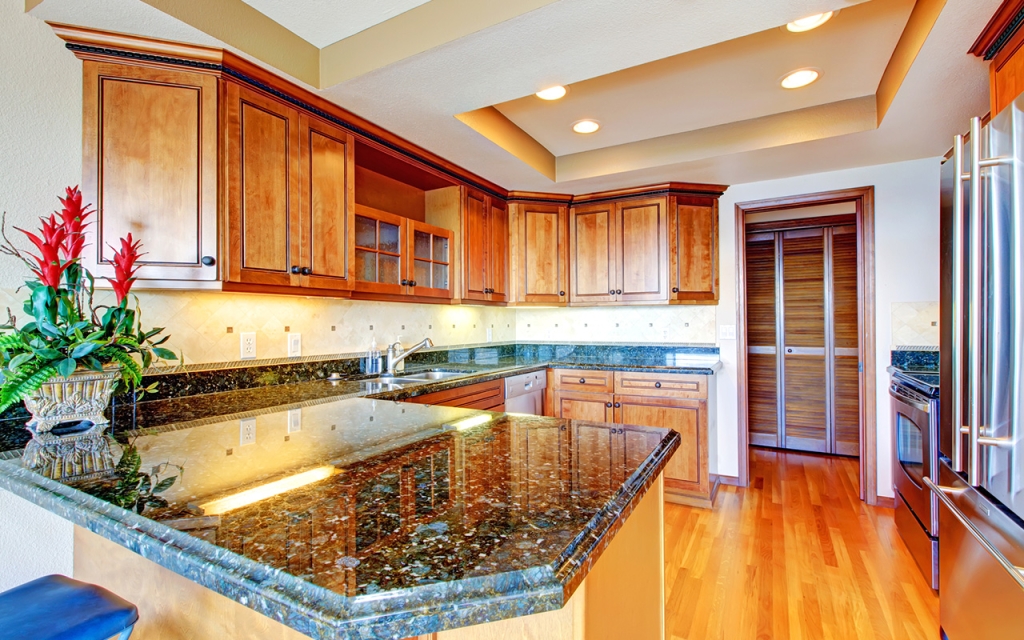Granite forms a major part of the Earth’s continental crust. It comes in many different colors, due to the composition of minerals within the different stones.
No two slabs are alike, making each counter-top something completely unique.
Granite is an igneous rock formed by the magma of volcanoes.
Granite is one of the hardest substances in the world. In fact, the only thing that is harder than granite is a diamond. This is what makes granite so sought after as a counter-top.

Common Areas Where Granite is Harvested
Granite is one of the most widely used natural stones for countertops, flooring, and other architectural features. It is quarried from numerous locations around the world, with each region producing granite with unique colors and patterns due to varying mineral compositions. Here are some of the most common areas where granite is harvested:
1. Brazil
Brazil is one of the largest exporters of granite in the world, known for its vibrant and diverse stone varieties. Brazilian granite is particularly famous for its exotic colors and patterns, such as Blue Bahia, Verde Ubatuba, and Giallo Ornamental. These stones often feature rich veining and a wide range of hues, from deep blues and greens to warm golds and whites.
2. India
India is another major source of granite, exporting stone to countries around the globe. Indian granite is renowned for its durability and rich color variety, including popular options like Black Galaxy, Kashmir White, and Absolute Black. India’s granite quarries are spread across regions like Rajasthan, Tamil Nadu, and Karnataka, each producing distinct types of granite suited for both indoor and outdoor applications.
3. China
China is a leading supplier of granite, particularly affordable varieties that are widely used in both residential and commercial construction projects. While China produces a range of colors, gray and black granite varieties like G654 and G603 are particularly popular. These stones are known for their uniform color and are often used for flooring, exterior facades, and monuments.
4. Italy
Though Italy is better known for its marble, it also produces high-quality granite. Italian quarries yield stones like Rosa Beta and Sardo that have a more subtle, refined appearance compared to the bold granites found in Brazil or India. Italian granite is often characterized by light hues, intricate veining, and a smooth finish, making it a luxurious choice for countertops and flooring.
5. The United States
The U.S. is home to several significant granite quarries, particularly in states like Vermont, Georgia, and South Dakota. Vermont’s Barre Gray Granite is highly regarded for its uniformity and is widely used for monuments, building facades, and countertops. Meanwhile, Georgia’s Elberton Granite is also famous for its durability and strength, making it a popular choice for large-scale construction projects.
6. Africa
Several African countries, including South Africa and Zimbabwe, produce high-quality granite. Zimbabwe Black granite, known for its deep black color and fine grain, is one of the most sought-after varieties in the world. South African quarries also produce a range of granites, including the light-colored Rustenburg granite, which is widely used in both interior and exterior designs.
Granite from these regions is prized for its beauty and unique geological characteristics, which make each piece distinct. When selecting granite for a project, understanding where the stone is sourced can help you choose a variety that suits your aesthetic and durability needs.
7. Absorbency
Granite is a porous material that absorbs liquids left on the surface for more than 15-20 minutes.
8. Stains
Highly acidic substances such as orange juice, coffee and wine (as well as some oils) will corrode sensitive stones and leave dull marks if left on the surface for more than 20 minutes. Those marks can be removed using special stain sponges! Granite will absorb water, but eventually it will evaporate without leaving any trace of damage.
9. Scratches
Granite is scratch-resistant but NOT scratch-proof. Repetitive exposure to high heat on the surface will result in it weakening and becoming more prone to scratch.
10. Shine
Quarrying is a form of polishing that gives granite its shine. The shine is permanent and does not require extensive maintenance. Additional finishes, such as leathered and honed, are not intended to shine.
11. Heat
Granite is heat resistant. However, it will adjust to the outside temperature. For example, if you placed a hot pan on your counter-top, it will reflect temperature and the counter-top will become hot. Be careful!
12. Maintenance
The best way to clean granite is with warm, soapy water. Avoid harsh chemicals or highly acidic household cleaners. Depending on the style of stone purchased, re-sealing granite is encouraged every couple of years.
Conclusion
Granite is a stunning and durable natural stone that enhances the beauty and functionality of any space, whether in the kitchen, bathroom, or exterior. Its global sourcing from countries like Brazil, India, China, and the U.S. provides homeowners and designers with a wide array of colors, patterns, and textures to suit any style. When choosing granite for your countertops or other applications, understanding the stone’s origins, maintenance needs, and long-term benefits can help ensure you make an informed decision. With proper care, granite can last a lifetime, adding both value and timeless elegance to your home.

